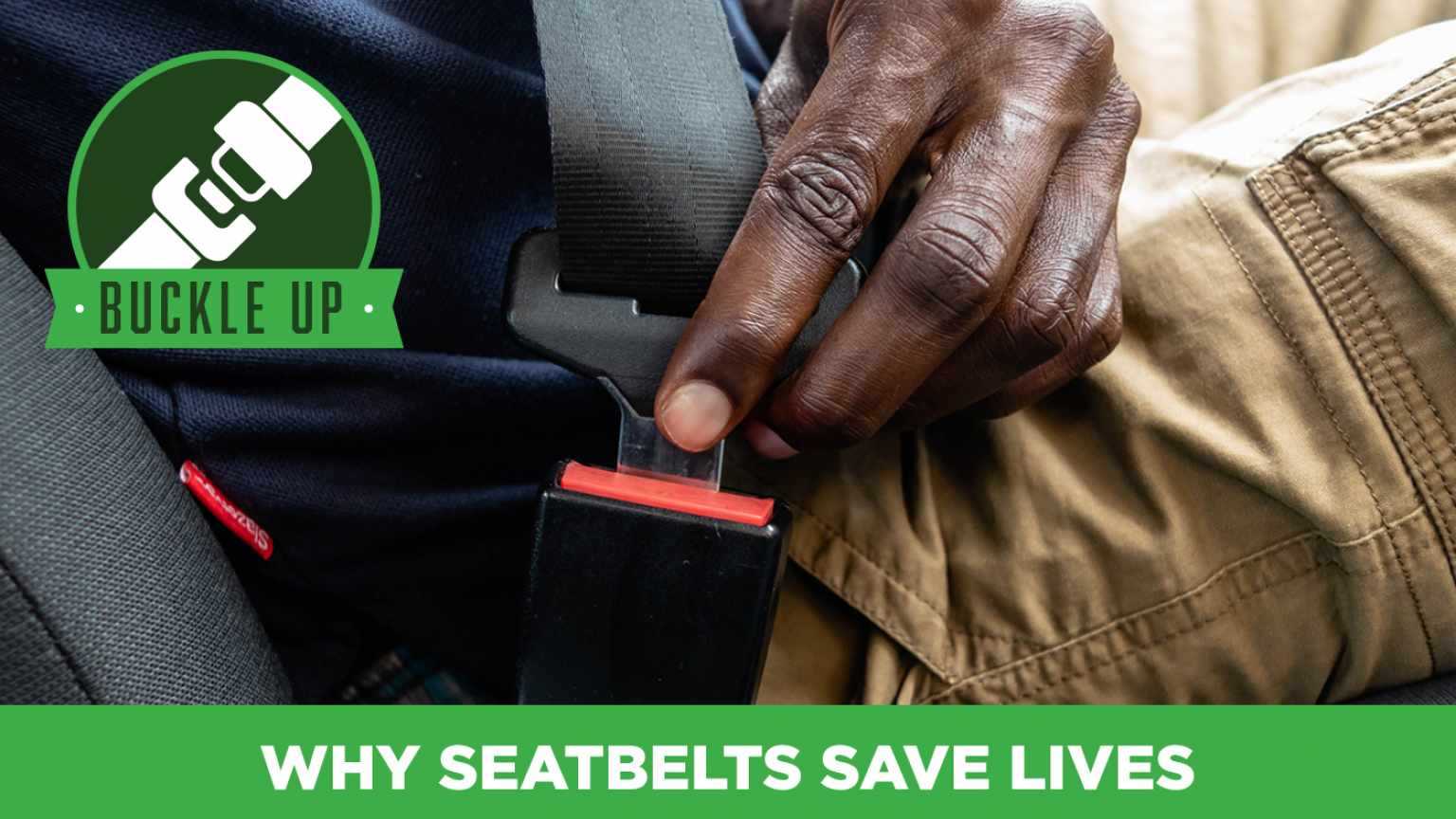Why Seatbelts Save Lives // Buckle Up
Posted By: Greg T. | Date Posted: Apr 22, 2021

Many of us still remember jumping into the car as kids and not bothering to put a seatbelt on – whether we were riding with our parents to the grocery store, or just down the street to a friend’s house. It wasn’t until the late ‘80s that most states passed legislation that made wearing your seatbelt mandatory.
The seatbelt is one of the most important safety features in your car. The primary purpose of a seatbelt is avoiding injury in the event of an accident.
Wearing your seatbelt could save your life. According to National Highway Traffic Safety Administration (NHTSA), wearing a seatbelt lowers your risk of receiving a fatal injury in a car accident by 45%.
Even though wearing your seatbelt is required in almost every state, and they have been proven to reduce injuries and fatalities in car accidents, many people still don’t always buckle up.
Why do seatbelts work? Let’s break it down.
When you’re in a car, your body Is moving at the same speed as the car. If you’re in an accident, your car stops suddenly, but your body still moves forward due to the momentum. Without having anything to stop you (your seatbelt), you will continue moving forward when the car is stopped forcefully. This could cause you to collide with whatever is in front of you in the car, or even fly out of the vehicle.
Wearing a seatbelt prevents your body from moving when you are in a crash. The modern seatbelt crosses your chest, shoulders, and lap to minimize the momentum of your body against the seatbelt and decrease risk of injury while slowing your body down during an accident.
Yes, you can still be bruised by your seatbelt and injured from other areas of the car, but the risk for injury and fatality is much lower when you are held in place in your vehicle.
Wear your seatbelt correctly.
For your seatbelt to do its job, you have to use it correctly. This means not only do you have to wear your seatbelt, but you should ensure that you and your family always wear both the chest and lap portion of the belt across your body and securely lock the belt into the buckle on the seat.
Not wearing the top section of the seatbelt across your chest and shoulder puts you at risk because your seatbelt will not be protecting the upper half of your body. You should never wear your seatbelt behind your back or under your arm.
You should also make sure your seatbelt fits properly. It should not be too tight, but it should also never feel loose. It’s important to also make sure the seatbelt is not too close to your neck. The top portion of your belt should go over your chest and shoulder.
Seatbelts vs. car seats.
Car seats and booster seats are required for children because their bodies cannot be properly protected by an adult seatbelt.
To determine if your child is ready to wear an adult seatbelt, follow the safety requirements of your child’s age and size. Information to help assess car seat requirements based on age, height, and weight can be found in this guide from the NHTSA. This resource also includes car seat installation and inspection tips.
Children are usually ready to transition from a booster seat to a seatbelt when they are between 8 and 12 years old. By this age, they are typically big enough to fit properly in their seatbelts.
Protecting children & teens.
Another reason to always wear your seatbelt is to teach your children how important using their own seatbelt is. Practicing this habit will help ensure seatbelt usage and safer driving habits.
Make seatbelt usage non-negotiable for your kids. Also, never assume they are buckled up before setting out on the road. Always make sure they are properly secured in their car seat or seatbelt before leaving, whether they are a young child or teen.
Tweens can often be resistant to using seatbelts. Make it a rule that everyone in your family must buckle up before leaving in the vehicle to encourage consistent and habitual seatbelt safety.
Remind your tweens and teens that not wearing a seatbelt is against the law as much as needed to make sure the message sticks. Provide resources like this blog or other articles online to reinforce the importance of wearing a seatbelt.
Are airbags more important than seatbelts?
Airbags alone do not provide enough protection for your body during accidents. In fact, airbags are designed to work with your seatbelt to keep you safe in the event of a crash. If your airbag deploys and you are not wearing your seatbelt, you could be seriously injured.
Buckling up is always the safest way to travel in a vehicle and wearing your seatbelt will help keep you safe if your airbags deploy.
How is wearing a seatbelt related to car insurance?
Complying with state law and wearing your seatbelt can also help keep your car insurance premiums lower. If you receive a seatbelt ticket, you may no longer qualify for safe driving discounts offered by many insurers.
The bottom line: Buckle up.
Overall, seatbelts are the most effective tools you can actively use to keep yourself safe in your car. They are designed to prevent you from major injuries during a collision. However, all of the progress made to seatbelts and other car safety features over the years are not effective if they are not used properly.
The country has made progress in staying safe and using seatbelts, but according to the United States Department of Transportation there are still 27 million Americans who do not follow seatbelt laws.
Keep yourself, your family, and your friends safe and make sure you’re always buckling up.
For more resources about seatbelts and safe driving tips, visit the NHTSA’s website.
